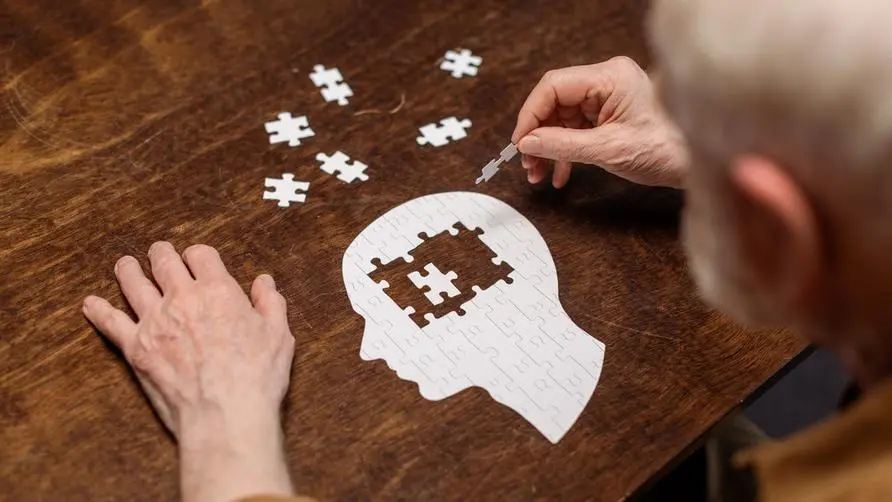Dementia is caused by too little acetylcholine in the brain? 5 dietary principles to improve neuronal health

The connections between neurons that form the brain’s electrical network decrease with normal aging
The main building blocks of the brain are neurons. The rest is composed of glial cells (stellate cells, oligodendritic cells, microglia, ependymal cells, Schwann cells, etc.) or supporting cells responsible for supplying nutrients and protecting neurons. There are about 30 billion neurons in our brain and about twice as many glial cells.
Thousands of dendrites connect neurons together, forming the body’s “power grid.” Even though the neurons are very close to each other, they are not touching each other. The tiny space between them is called the “synaptic cleft”. “Electrical current” allows the brain to coordinate movements, control breathing, and express hunger, pain, joy, or sadness. Each component has a specific role, but the current is always the carrier of information.
The electrical current is generated by neurotransmitters that attach to specific receptors that are likened to “locks”: each receptor is adapted to only one key.
Once the chemical medium (médiateur chimique) is fixed to their receiver (when the key is inserted in the lock), communication is established. Therefore, these media ensure the execution of electrical signaling, delivering energy and information to other parts of the body.
Our innate “neuronal capital” decreases with normal aging. However, contrary to past belief, some neurons have been shown to be able to develop from stem cells after birth: this is neurogenesis. This phenomenon is linked to certain areas of the brain, such as the hippocampus.
4 major chemical mediators essential for physical and mental balance
The brain and the rest of the body function optimally when each neuron is programmed correctly to produce, send, and receive specific chemical mediators. The 4 main chemical mediators that are integral to our physical and mental balance are:
Dopamine: prompts us to take action
Acetylcholine
γ-Aminobutyric acid (Gaba)
Serotonin: the tranquility hormone
Together they form the code of our brains. Each chemical medium creates a unique circuit diagram, which can be thought of as brain waves. The study of these brain waves and their interrelationships provides the data needed to explain various physiological and brain symptoms, which may then point to dysfunction with specific biochemical imbalances.
Of the many neurotransmitter abnormalities shown in Alzheimer’s disease, two are currently likely to be at work: acetylcholine (ACh) deficiency and glutamate (Gln) excess.
Alzheimer’s disease features acetylcholine and serotonin most disrupted
Alzheimer’s disease is characterized by a decrease in acetylcholine and abnormalities in certain acetylcholine cell receptors, called nicotinic receptors. This decrease is caused by the enzyme acetylcholinesterase (AChE) that breaks down acetylcholine.
Serotonin is our tranquility hormone. It allows us to manage our stress, emotions and balance, but also curb our impulses. It also regulates appetite (limiting snacking) and sleep, and limits feelings of impatience and irritability. In order to have sufficient amounts of these neurotransmitters it is necessary to add:
The precursors (amino acids) of these hormones: choline, phospholipid choline or phospholipid serine of acetylcholine, these substances are mainly found in soy lecithin; tryptophan or 5-hydroxychromatine Amino acid is the precursor of serotonin and is found in small amounts in fish, cereals, cauliflower, pineapple, banana, broccoli, spinach, walnuts, soybeans, carrots, chocolate, and mung beans.
Some good fats, omega-3 and omega-6 unsaturated fatty acids, and phospholipids. They will synthesize the precursors and allow good flow across the membrane, allowing the precursors to be excreted at the synapse.
Good intestinal digestion and microbial phase.
The presence of cofactors is necessary, such as magnesium, zinc, copper and vitamins B6 and C.
The presence of antioxidants will protect the membrane receptors that receive neurotransmitters.
All of these elements should be considered in Alzheimer’s disease because all neurotransmitters are important for the balance and normal functioning of the brain. Acetylcholine and serotonin appear to be the two neurotransmitters most disrupted in this disease. Therefore, it is best to prioritize preventing their decrease by taking precursors.
Further reading:
Can fiber intake reduce blood pressure and prevent dementia? Experts urge eating “4 kinds of food”





